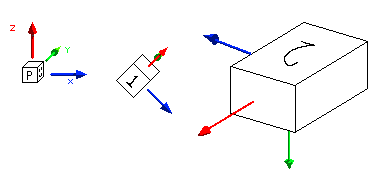Hello,
I guess the first step in this sort of project is to lay down the basic theory. According to GregoriousT’s plans, “Mechaenetia” will be set on one or more virtual planets, represented by a 3-d tiling (tessellation) of 0.25m3 cubes.
The shape of each planet is not that of a sphere, tetrahedron, cube, isocahedron, or dodecahedron. Neither is each planet flat. Just what shape are you planning on using? A two dimensional grid will fit on a torus, for example.
As this is a Minecraft clone, I assume the cubes will be stored in some sort of matrix. Will every quarter-meter cube in the universe exist on the same matrix? Or will you create matrices for each planet, or even separate matrices for different parts of each planet?
How do you plan on storing the virtual universe? Will it be generated on the fly, or when first starting a new game? Will the universe be exactly the same for every game, or procedurally generated? If procedurally generated, to what extent? Compare procedural generation in Minecraft to a game like Terraria.
If some region is generated on the fly, do you commit it to permanent storage a la Minecraft? Or do you plan on only committing changes to the world state, then generating the up-to-date region on the fly? Or perhaps you plan on doing something in-between, where after a threshold of changes are recorded, you simply commit the whole region down to the last cube to a file.
When it comes to “entities” such as people, animals, trees, houses, etc, are these going to be represented in the matrix with cubes, or in a separate list, or both? For example, in Minecraft people and animals do not actually take up a block in the dimension’s array of blocks. But trees and houses take up blocks. How will this work in Mechaenetia?
Just some thoughts.
~Max
